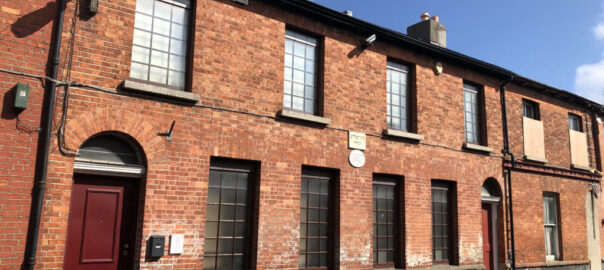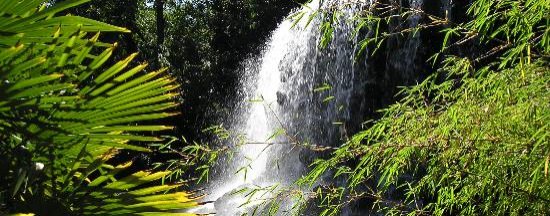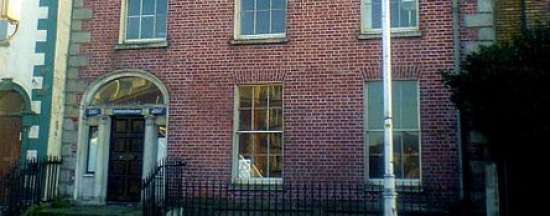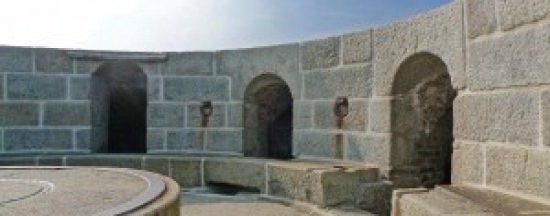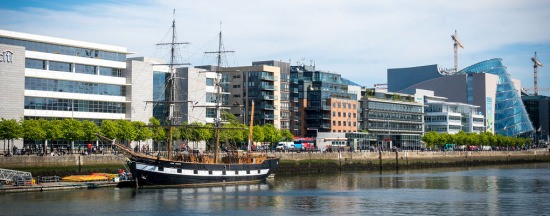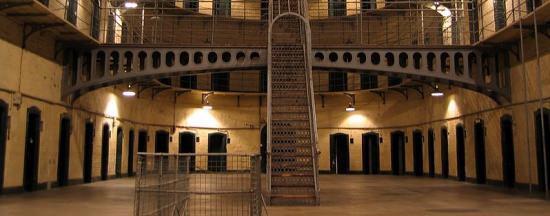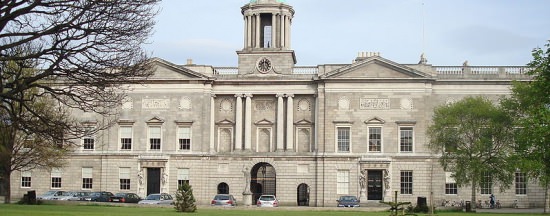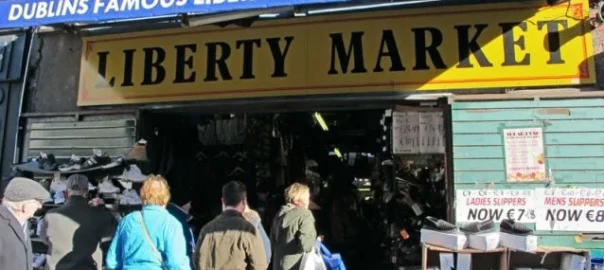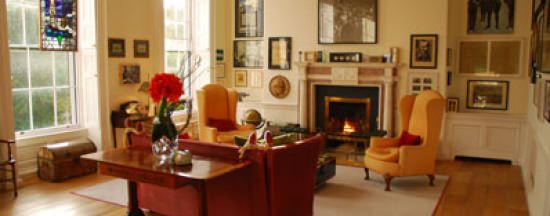Kilmainham Gaol is one of the largest unoccupied gaols in Europe and its history is relevant to some of the most heroic and tragic events in Ireland’s emergence as a modern nation from the 1780’s to the 1920’s. Attractions at this splendidly atmospheric site include a major exhibition detailing the political and penal history of the prison and its restoration. The tour of the prison (which is outstanding) includes an audio-visual show.
When the Gaol was first built, public hangings took place at the front of the Gaol. There was no segregation of prisoners; men, women and children were incarcerated up to five in each cell, with only a single candle for light and heat, most of their time being spent in the cold and the dark. The cells were roughly 28 square meters in size.
Children were sometimes arrested for petty theft, the youngest said to be a seven year-old child, while many of the adult prisoners were transported to Australia. Remarkably, for an age that prided itself on a protective attitude for the ‘weaker sex’, the conditions for women prisoners were worse than for men. An official 1809 report observed that male prisoners were supplied with iron bedsteads while females ‘lay on straw on the flags in the cells and common halls.’ Half a century later there was little improvement.
Between 1796 and 1924, Kilmainham Gaol was a place where, apart from Daniel O’Connell and Michael Collins, every significant Irish nationalist leader of both the constitutional and physical force traditions was incarcerated. Thus, its history as an institution is intimately linked with the story of the Irish nationalism.
The majority of the Irish leaders in the rebellions of 1798, 1803, 1848, 1867 and 1916 were imprisoned there. It also housed prisoners during the Irish War of Independence (1919–21) and many of the anti-treaty forces during the civil war period. Charles Stewart Parnell was imprisoned here, along with most of his parliamentary colleagues, when he signed the Kilmainham Treaty with William Gladstone.
Kilmainham Gaol was decommissioned as a prison by the Irish Free State government in 1924. Seen principally as a symbol of oppression, there was no interest in its preservation as a monument to the struggle for national independence. The jail’s potential function as a focus for national memory was complicated by the fact that the first four republican prisoners executed by the Free State government during the Irish Civil War were shot in the prison yard.
The site now houses a museum on the history of Irish nationalism and offers excellent guided tours of the building. An art gallery on the top floor exhibits paintings, sculptures and jewellery of prisoners incarcerated in prisons all over contemporary Ireland.
[Thanks to Wikipedia for the above information]
The main exhibition at Kilmainham Gaol Museum tells the story of the social and political history of the prison. Three main themes are explored on the different levels of the exhibition space: the social history of Kilmainham Gaol and Irish prisons in the 1800s, the history of Irish nationalism and republicanism, 1796-1924, and the restoration of Kilmainham Gaol in the 1960s.
The ground floor exhibition tells the story of Kilmainham from the perspective of the ordinary prisoner. A prison register for the Gaol shows the crimes for which men, women and children were imprisoned, ranging from violent assault to stealing apples from an orchard. Visitors can see the small wooden box used by convict John Sheahan to carry his possessions to Australia in 1842. A Victorian-era Gandolfi camera, used to capture prisoner ‘mugshots’, is also on display.
Rebellion, nationalism and the path to independence are the themes of the exhibition on the first floor, which deals with Irish political history from the 1798 rebellion up until the end of the Irish Civil War in 1924. Objects on display include Robert Emmet’s proclamation of a provisional government of Ireland in 1803, the last letter written by Charles Stewart Parnell and scapulars taken from the body of Michael Collins following his assassination in 1922.
The ‘Last Words’ section displays the last letters and personal belongings of the fourteen leaders of the Easter Rising executed at Kilmainham Gaol in May 1916. The final floor of the exhibition tells the extraordinary story of a group of volunteers who rescued Kilmainham Gaol from near ruin in the 1960s and restored it.
Opening Hours:
Open 7 days: 9.30am – 5.15pm.
Late opening until 5.45pm in July and August.
The Gaol is accessed by guided tour only with a maximum of 35 people per tour. During peak tourist seasons the venue is often fully booked, and cannot accommodate walk-ins. Pre-booking of tickets is essential to gain access at your chosen day and time.
Closed 24 – 27 December.
Contact & Pricing:
kilmainhamgaolmuseum.ie
kilmainhamgaol@opw.ie
Tel: 01 453 5984
Adults €8 (online price); concessions
